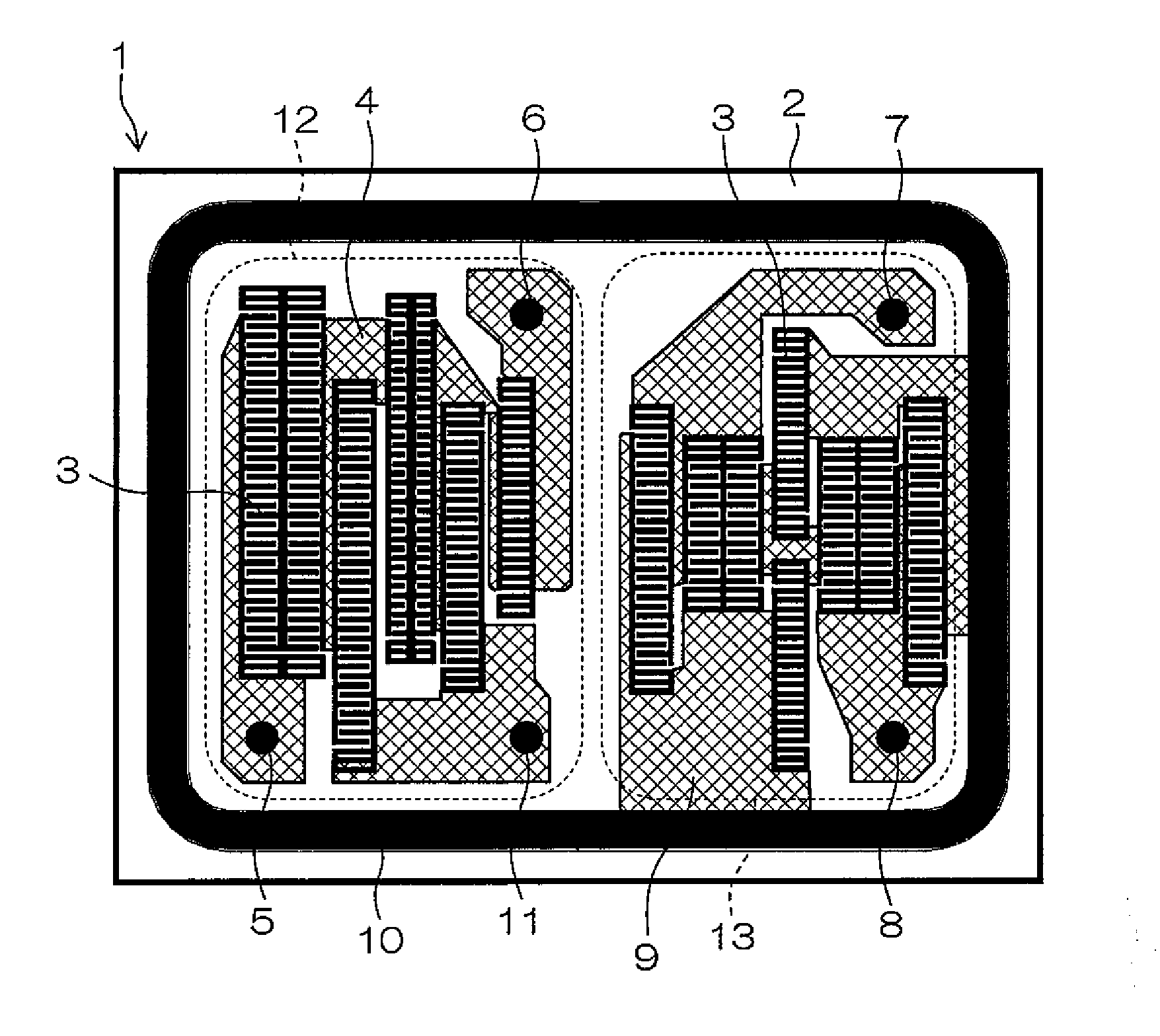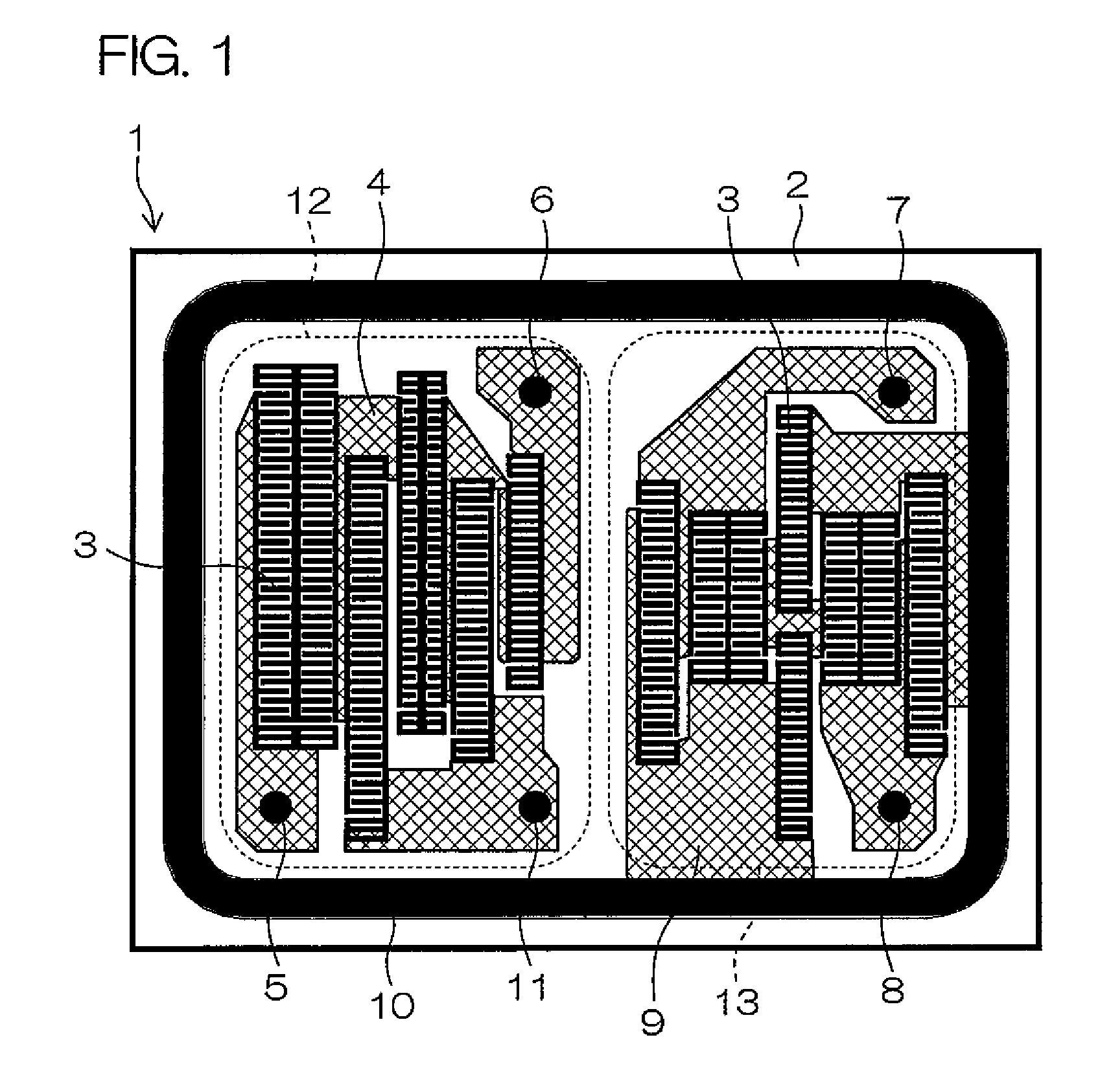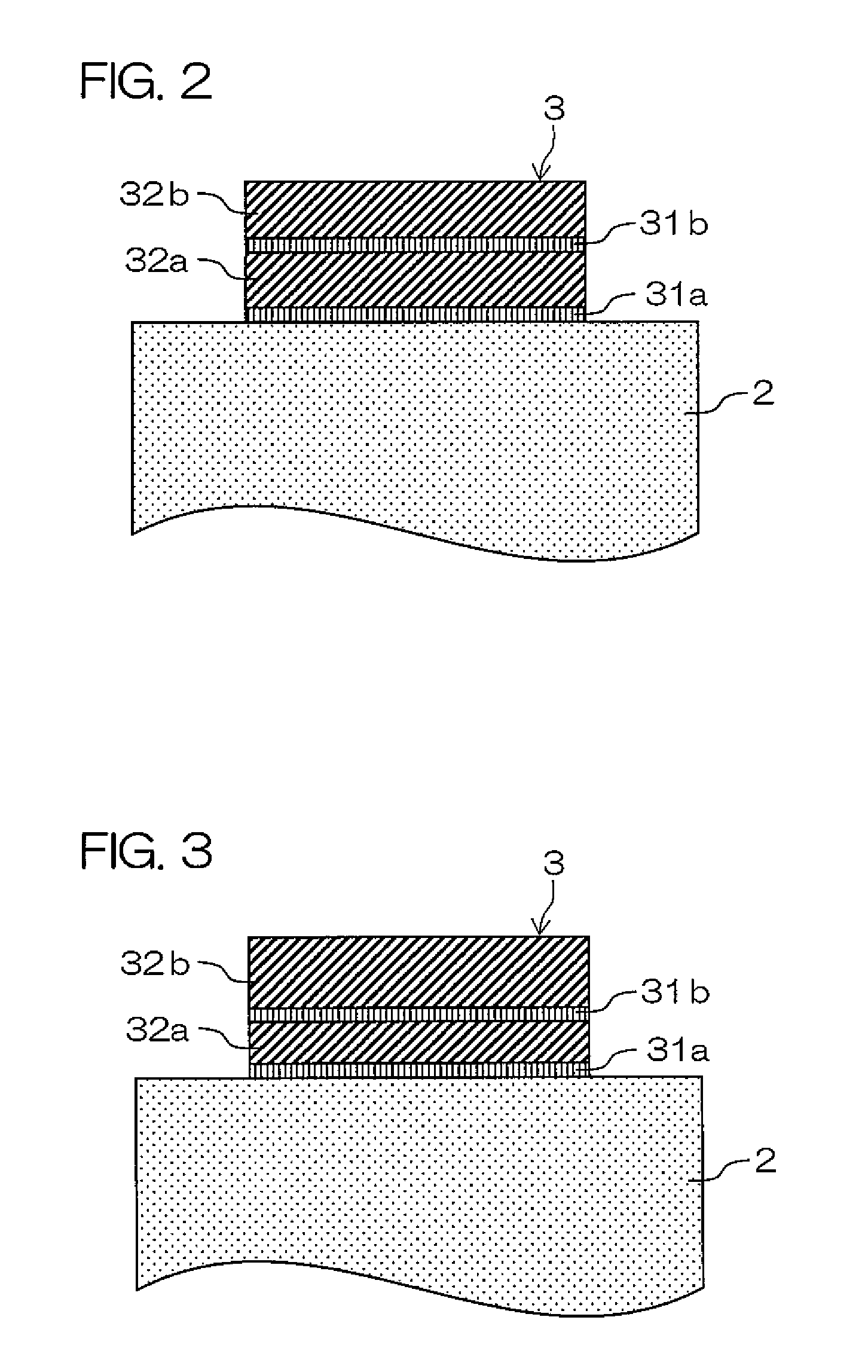Surface Acoustic Wave Element and Communication Device
a surface acoustic wave and communication device technology, applied in piezoelectric/electrostrictive/magnetostrictive devices, piezoelectric/electrostriction/magnetostriction machines, electrical apparatus, etc., can solve the problems of low power handling capability to be used as duplexers, inability to achieve sufficient characteristics, and damage to electrodes, etc., to achieve improved power handling capability of electrode fingers, improved power handling capability, and improved power handling capability
- Summary
- Abstract
- Description
- Claims
- Application Information
AI Technical Summary
Benefits of technology
Problems solved by technology
Method used
Image
Examples
example 1
[0168]On a principal surface of a piezoelectric substrate 2 (with a thickness of 250 μm) comprising a 38.7° rotated, Y-cut, X-propagation single crystalline lithium tantalite, four conductive layers were formed including, in the order from the substrate side, Ti (first metal layer 31a) / Al and 1% by mass orientation degrees of the first metal layer 31a and the second metal layer 32a were higher than those of the first metal layer 31b and the second metal layer 32b as later described.
[0169]Subsequently, these conductive layers were subjected to patterning by photolithography and RIE so as to form a large number of surface acoustic wave element areas, each including a transmitting side filter area 12 and a receiving side filter area 13 that have IDT electrodes 3, input pad sections 5, 7 and output pad sections 6, 8 and a circumferential electrode 10 as shown in FIG. 1. The etching gas used herein was a gas mixture of BCl3 and Cl2. The line widths of electrode fingers constituting the I...
example 2
[0177]On a principal surface of a piezoelectric substrate 2 (with a thickness of 25 μm) comprising 38.7° rotated, Y-cut, X-propagation single crystalline lithium tantalite, a metal layer composed of Al and 1% by mass of Cu by sputtering. The thickness of the layer was 390 nm. The forming was carried out with conditions optimized by increasing the plasma input power and the film forming rate from those in a conventional case so that each one of crystal grains continuously grows in the thickness direction of the metal layer from the upper surface to the lower surface.
[0178]The film forming conditions in the present example were as follows: Ar flow rate of 100 sccm; film forming pressure of 0.25 Pa; input power of 800 W during the forming of Ti layer; input power of 3 kW during the forming of Al—Cu layer. However, since the optimum values of the forming conditions largely depend on the apparatus and the use situations of the targets, these forming conditions are not invariant, but the ...
PUM
 Login to View More
Login to View More Abstract
Description
Claims
Application Information
 Login to View More
Login to View More - R&D
- Intellectual Property
- Life Sciences
- Materials
- Tech Scout
- Unparalleled Data Quality
- Higher Quality Content
- 60% Fewer Hallucinations
Browse by: Latest US Patents, China's latest patents, Technical Efficacy Thesaurus, Application Domain, Technology Topic, Popular Technical Reports.
© 2025 PatSnap. All rights reserved.Legal|Privacy policy|Modern Slavery Act Transparency Statement|Sitemap|About US| Contact US: help@patsnap.com



